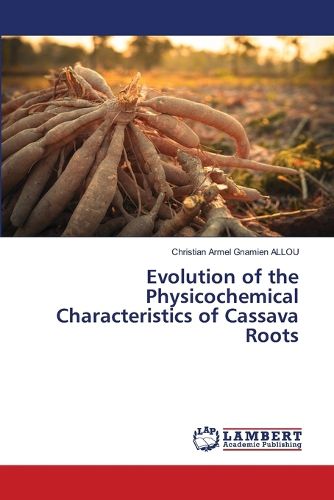Readings Newsletter
Become a Readings Member to make your shopping experience even easier.
Sign in or sign up for free!
You’re not far away from qualifying for FREE standard shipping within Australia
You’ve qualified for FREE standard shipping within Australia
The cart is loading…






This title is printed to order. This book may have been self-published. If so, we cannot guarantee the quality of the content. In the main most books will have gone through the editing process however some may not. We therefore suggest that you be aware of this before ordering this book. If in doubt check either the author or publisher’s details as we are unable to accept any returns unless they are faulty. Please contact us if you have any questions.
Cassava is an important food product, due to the volume of its production and consumption. It is, in fact, an important staple food in the world, particularly in Africa. It is cultivated throughout the Ivorian territory with a predominance in the south. Its strong demand has led some producers to harvest early, regardless of the impact of the harvest stage on the physicochemical parameters of cassava roots. The objective of this work was to determine the stage of harvest (maturity) of cassava roots which allows cassava roots to be obtained with good nutritional qualities. Thus, the physicochemical characteristics were evaluated at different stages of harvest (11th, 12th, 13th and 14th month after planting the cuttings) of the cassava roots of the Yace variety. The highest energy values (389.21 Kcal/100 g of DM) were obtained in the twelfth month of harvest. At this same stage, the carbohydrate and starch contents increased respectively by 94.65 g/100 g of DM and of 83.54 g/100 g of DM. Also, these cassava roots had a substantial share of minerals and polyphenols with very low levels of hydrocyanic acid and fiber compared to those of the other harvested stages.
$9.00 standard shipping within Australia
FREE standard shipping within Australia for orders over $100.00
Express & International shipping calculated at checkout
This title is printed to order. This book may have been self-published. If so, we cannot guarantee the quality of the content. In the main most books will have gone through the editing process however some may not. We therefore suggest that you be aware of this before ordering this book. If in doubt check either the author or publisher’s details as we are unable to accept any returns unless they are faulty. Please contact us if you have any questions.
Cassava is an important food product, due to the volume of its production and consumption. It is, in fact, an important staple food in the world, particularly in Africa. It is cultivated throughout the Ivorian territory with a predominance in the south. Its strong demand has led some producers to harvest early, regardless of the impact of the harvest stage on the physicochemical parameters of cassava roots. The objective of this work was to determine the stage of harvest (maturity) of cassava roots which allows cassava roots to be obtained with good nutritional qualities. Thus, the physicochemical characteristics were evaluated at different stages of harvest (11th, 12th, 13th and 14th month after planting the cuttings) of the cassava roots of the Yace variety. The highest energy values (389.21 Kcal/100 g of DM) were obtained in the twelfth month of harvest. At this same stage, the carbohydrate and starch contents increased respectively by 94.65 g/100 g of DM and of 83.54 g/100 g of DM. Also, these cassava roots had a substantial share of minerals and polyphenols with very low levels of hydrocyanic acid and fiber compared to those of the other harvested stages.